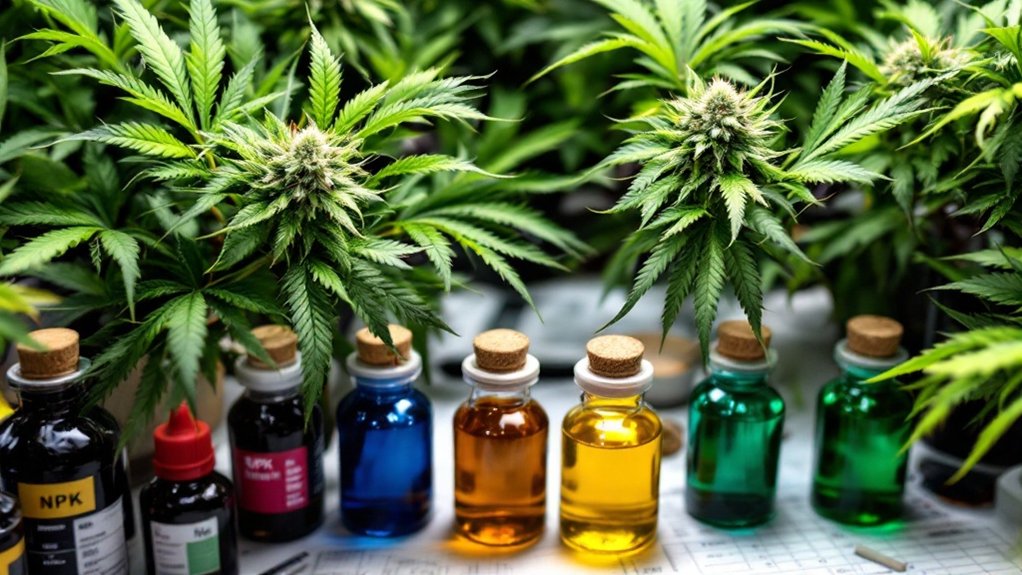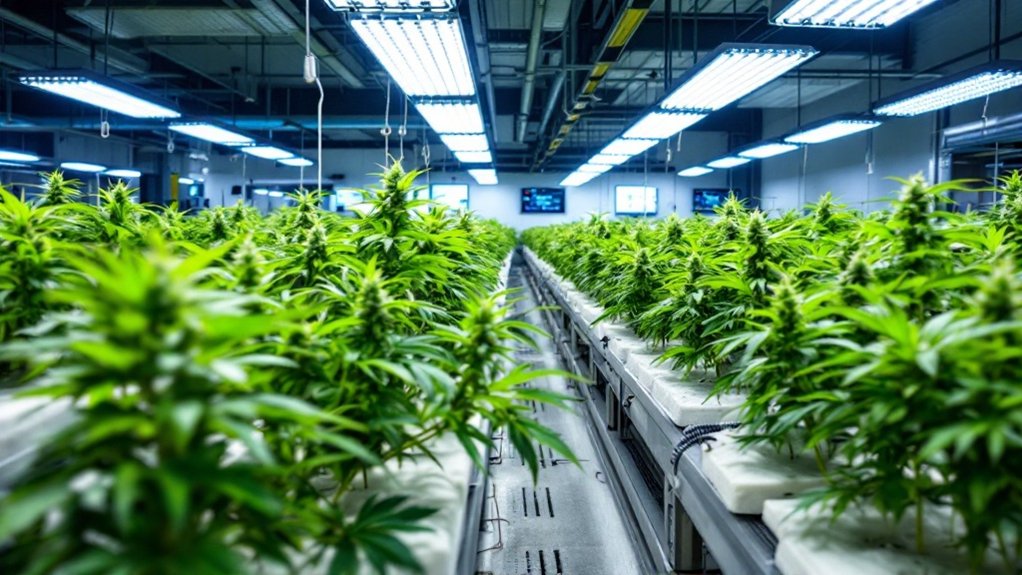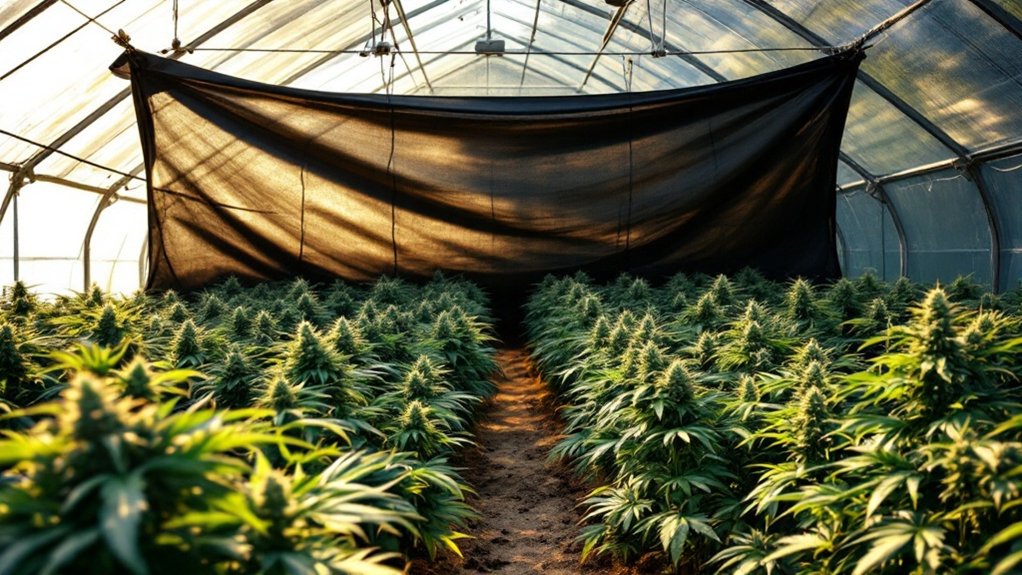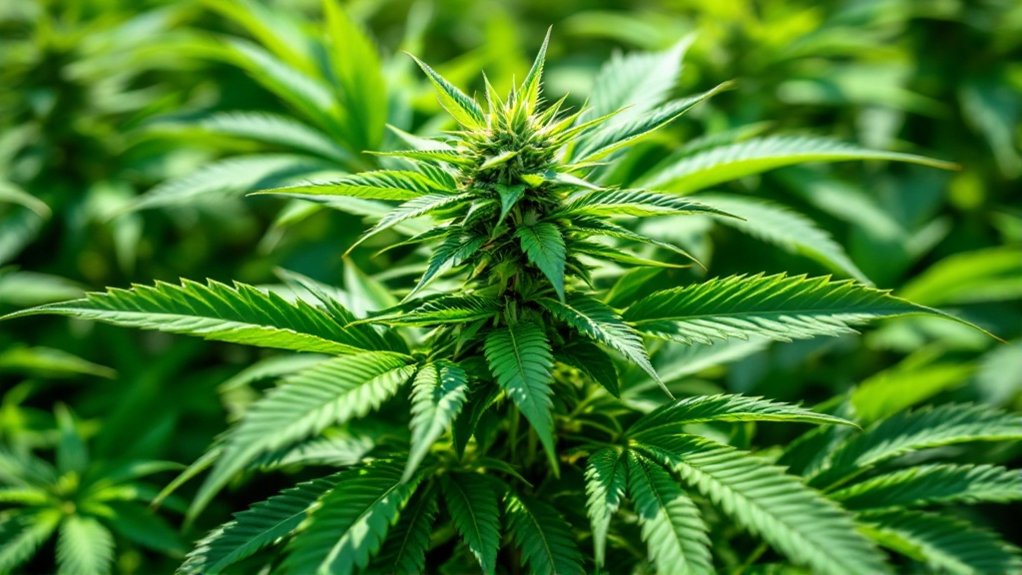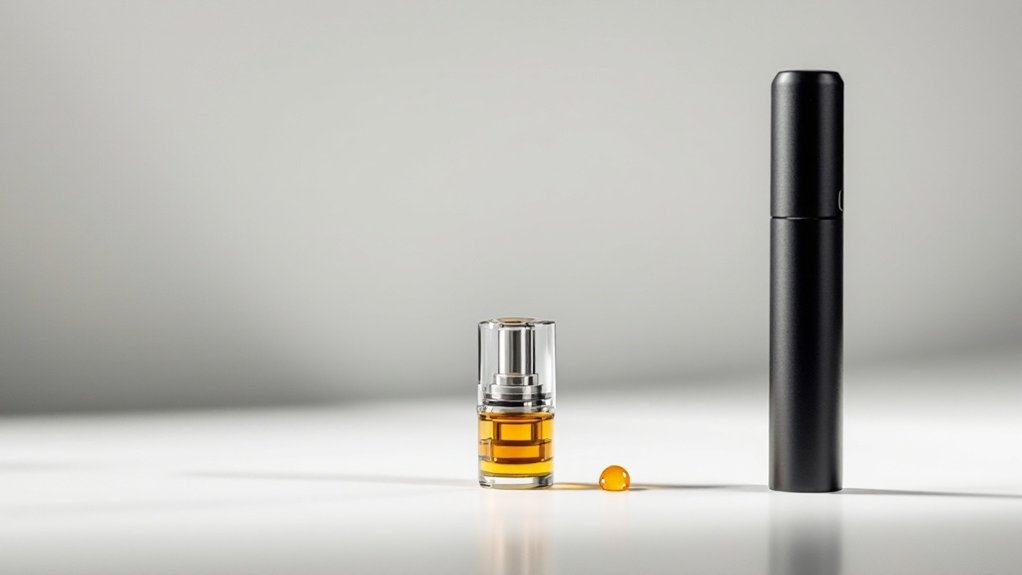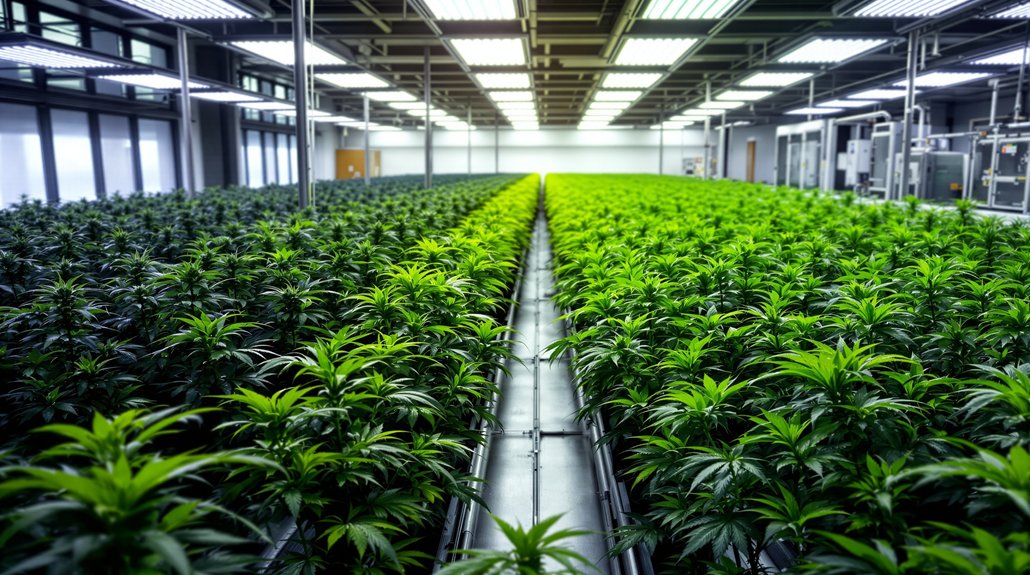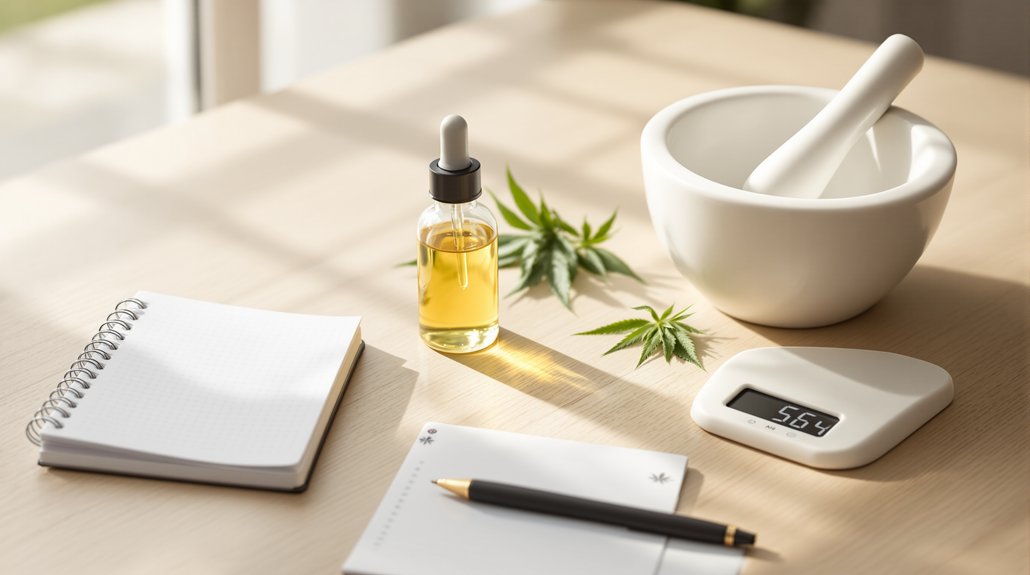Effective cannabis nutrient scheduling adapts to each growth stage. Vegetative plants need nitrogen-heavy feeds weekly, while flowering requires phosphorus and potassium twice weekly. Ripening shifts back to weekly feeds with calcium emphasis. Overfeeding kills. Underfeeding stunts. Organic options release nutrients slowly, reducing burn risk. Water quality matters, ignore it at your peril. pH balance prevents lockout. Both beginners and veterans make mistakes. The details make the difference between mediocre buds and trophy-worthy harvests.
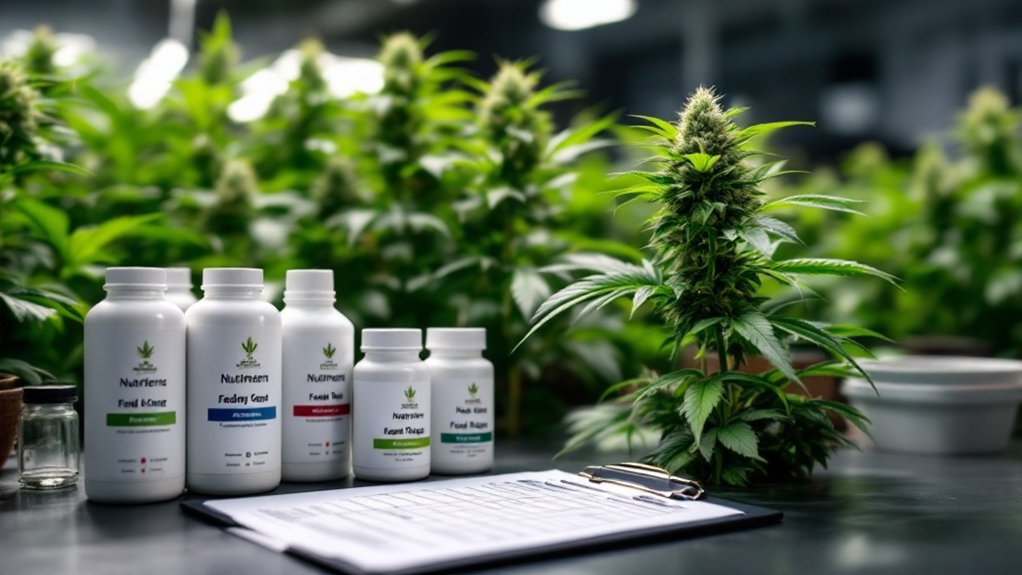
The complex dance of feeding cannabis plants isn’t just about dumping nutrients and hoping for the best. It’s a calculated science that changes with each growth stage. Cannabis demands different nutritional profiles as it evolves from vegetative to flowering to ripening stages. Get it wrong and watch your precious plants suffer. Get it right? That’s where the magic happens.
During the vegetative stage, plants crave nitrogen. They’re hungry little monsters building stems and leaves. Feed them once weekly with high-nitrogen, lower phosphorus and potassium solutions.
When flowering kicks in, plants shift priorities. More buds, less leaf growth. The schedule ramps up to twice weekly with a phosphorus and potassium focus.
Finally, during ripening, calcium and magnesium take center stage as plants put the finishing touches on those precious buds. Back to once weekly feeding.
NPK. Three letters that rule the cannabis world. These primary nutrients, along with secondary nutrients like calcium and magnesium, plus a host of trace elements including zinc and iron, form the backbone of any feeding schedule.
Different ratios at different times. Simple, right? Wrong.
Custom nutrient plans consider water type, product lines, strain genetics, and growing environment. Many experienced growers use CANNA COCO grow schedules for consistent, predictable results in coco-based mediums. Indoor versus outdoor? Totally different ballgames.
And the mistakes growers make? Legendary. Overfeeding burns plants. Underfeeding starves them. Wrong ratios create imbalances. Some growers don’t adjust for growth stages or water quality.
Some turn to organic schedules for simplicity. Slower releasing, less burn risk, and hey, good for the planet too.
Whatever approach you take, combining proper feeding with appropriate light schedules maximizes results. Monitor plants, adjust accordingly, consider environmental factors, and flush periodically to prevent salt buildup.
Maintaining the correct pH levels between 6.0 and 7.0 is essential for preventing nutrient lockout and ensuring optimal nutrient absorption throughout all growing stages.
As of April 2025, successful growers know that nutrient scheduling isn’t just following a calendar, it’s responding to plants’ changing needs throughout their lifecycle. Miss a beat in this nutritional dance, and your harvest pays the price.
Frequently Asked Questions
How Do I Diagnose and Fix Cannabis Nutrient Deficiencies?
Diagnosing cannabis nutrient deficiencies requires detective work.
Growers should check symptoms against location: mobile deficiencies appear in old growth, immobile in new growth.
Yellow between leaf veins? Iron deficiency. Purple stems? Phosphorus issues.
Testing pH is essential, keep it between 5.8-6.3.
Plants can’t absorb nutrients outside this range. No wonder they’re struggling!
Fix by adjusting pH first, then adding specific nutrients.
Sometimes, less is more.
Plants aren’t that complicated. They just need balance.
Can I Use Household Items as Organic Cannabis Nutrients?
Household items can indeed fuel cannabis growth. Coffee grounds deliver nitrogen kicks.
Banana peels? Phosphorus and potassium powerhouses for flowering. Some growers even use diluted urine – yes, human pee – for its NPK content. Gross but effective.
Bokashi composting transforms kitchen scraps into plant food within weeks. Application requires finesse, though. Too much coffee grounds can mess with soil pH.
These DIY nutrients save cash but lack commercial precision.
What’s the Best NPK Ratio for Cannabis During Flowering?
Cannabis thrives on changing NPK ratios throughout flowering.
Early flowering? A 1:3:2 ratio gets things rolling. As buds develop, nitrogen needs plummet – nature’s way of saying “focus on the flowers, not the leaves.”
Mid-flowering benefits from 1:3:3, while late-stage flowering performs best with virtually no nitrogen (0:3:3).
Some growers swear by 5-10-14 for dense, sticky buds.
Too much nitrogen? Kiss your quality goodbye.
Does Flushing Before Harvest Actually Improve Cannabis Quality?
The science is in, folks. Pre-harvest flushing of cannabis? Pretty much bogus.
University of Guelph research found zero measurable improvements in quality, cannabinoids, or terpenes. Blind taste tests even showed people preferred non-flushed weed. Shocking, right?
Growers still do it anyway, tradition dies hard. The only real benefit? Saving money on fertilizer during those final weeks.
Old myths die hard in cannabis cultivation.
How Often Should I Change My Nutrient Solution in Hydroponic Systems?
Hydroponics experts recommend changing nutrient solutions every 2-3 weeks for standard systems.
Smaller containers? More frequent changes.
Truth is, it depends on your setup. When you’ve topped off with water equal to your reservoir volume, it’s change time.
Signs you’ve waited too long: pH swings wildly, roots look like zombie appendages, and there’s a smell that would offend even a sewage worker.
